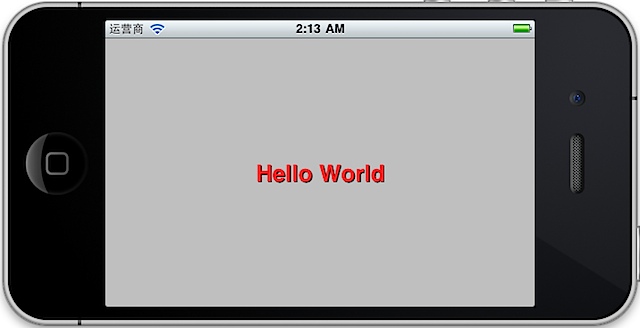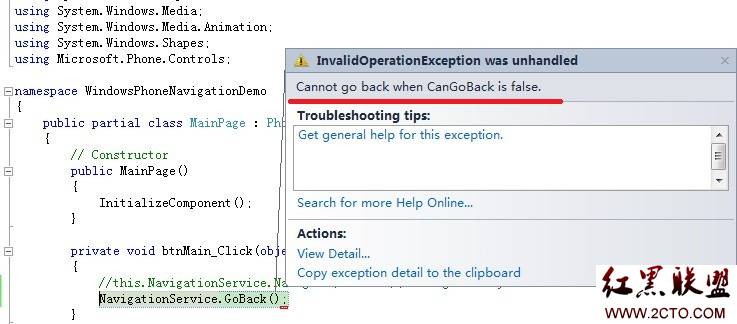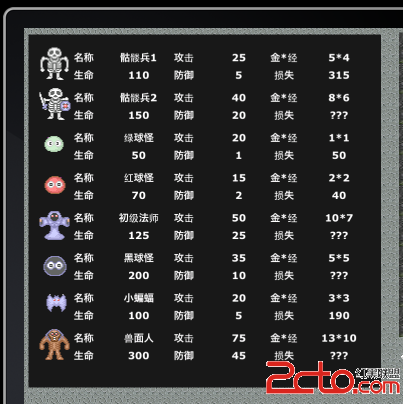iphone多线程的使用
以下是开发初期收集整理的一点资料,简单实用,希望对新人有帮助,都是网络上收集的,原始出处以不明,若侵犯您的权益,请告知,本人将及时删除相关内容。
多线程之NSInvocationOperation
多线程编程是防止主线程堵塞,增加运行效率等等的最佳方法。而原始的多线程方法存在很多的毛病,包括线程锁死等。在Cocoa中,Apple提供了NSOperation这个类,提供了一个优秀的多线程编程方法。
本次介绍NSOperation的子集,简易方法的NSInvocationOperation:
@implementation MyCustomClass
- (void)launchTaskWithData:(id)data
{
//创建一个NSInvocationOperation对象,并初始化到方法
//在这里,selector参数后的值是你想在另外一个线程中运行的方法(函数,Method)
//在这里,object后的值是想传递给前面方法的数据
NSInvocationOperation* theOp = [[NSInvocationOperation alloc] initWithTarget:self
selector:@selector(myTaskMethod:) object:data];
// 下面将我们建立的操作“Operation”加入到本地程序的共享队列中(加入后方法就会立刻被执行)
// 更多的时候是由我们自己建立“操作”队列
[[MyAppDelegate sharedOperationQueue] addOperation:theOp];
}
// 这个是真正运行在另外一个线程的“方法”
- (void)myTaskMethod:(id)data
{
// Perform the task.
}
@end一个NSOperationQueue 操作队列,就相当于一个线程管理器,而非一个线程。因为你可以设置这个线程管理器内可以并行运行的的线程数量等等。下面是建立并初始化一个操作队列:
@inte易做图ce MyViewController : UIViewController {
NSOperationQueue *operationQueue;
//在头文件中声明该队列
}
@end
@implementation MyViewController
- (id)init
{
self = [super init];
if (self) {
operationQueue = [[NSOperationQueue alloc] init]; //初始化操作队列
[operationQueue setMaxConcurrentOperationCount:1];
//在这里限定了该队列只同时运行一个线程
//这个队列已经可以使用了
}
return self;
}
- (void)dealloc
{
[operationQueue release];
//正如Alan经常说的,我们是程序的好公民,需要释放内存!
[super dealloc];
}
@end简单介绍之后,其实可以发现这种方法是非常简单的。很多的时候我们使用多线程仅仅是为了防止主线程堵塞,而NSInvocationOperation就是最简单的多线程编程,在iPhone编程中是经常被用到的。
///////////////////////////////////////////////////////////////////////////////////////////////////
1 在主线程里加入一个loading画面……
2 {
3 [window addSubview:view_loading];
4 [NSThread detachNewThreadSelector:@selector(init_backup:) toTarget:self withObject:nil];
5 }
可以通过performSelectorOhMainThread更新UI元素,比如设置进度条等等。最后消除loading画面,载入主View。
7 - (void)init_backup:(id)sender
8 {
9 NSAutoreleasePool *pool = [[NSAutoreleasePool alloc] init];
10
11 // ...
12 int i = status;
13 [self performSelectorOnMainThread:@selector(show_loading:) withObject:[NSNumber numberWithInt:i] waitUntil Done:NO];
14
15 [view_loading removeFromSuperview];
16 [window addSubview:tabcontroller_main.view];
17 [pool release];
18 }
///////////////////////////////////////////////////////
利用iphone的多线程实现和线程同步
从接口的定义中可以知道,NSThread和大多数iphone的接口对象一样,有两种方式可以初始化:
一种使用initWithTargetid)target selector:(SEL)selector object:(id)argument,但需要负责在对象的retain count为0时调用对象的release方法清理对象。
另一种则使用所谓的convenient method,这个方便接口就是detachNewThreadSelector,这个方法可以直接生成一个线程并启动它,而且无需为线程的清理负责。
#import <UIKit/UIKit.h>
@inte易做图ce SellTicketsAppDelegate : NSObject <UIApplicationDelegate> {
int tickets;
int count;
NSThread* ticketsThreadone;
NSThread* ticketsThreadtwo;
NSCondition* ticketsCondition;
UIWindow *window;
}
@property (nonatomic, retain) IBOutlet UIWindow *window;
@end
然后在实现中添加如下代码:
// SellTicketsAppDelegate.m
// SellTickets
//
// Created by sun dfsun2009 on 09-11-10.
// Copyright __MyCompanyName__ 2009. All rights reserved.
//
#import "SellTicketsAppDelegate.h"
@implementation SellTicketsAppDelegate
@synthesize window;
- (void)applicationDidFinishLaunching:(UIApplication *)application {
tickets = 100;
count = 0;
// 锁对象
ticketCondition = [[NSCondition alloc] init];
ticketsThreadone = [[NSThread alloc] initWithTarget:self selector:@selector(run) object:nil];
[ticketsThreadone setName:@"Thread-1"];
[ticketsThreadone start];
ticketsThreadtwo = [[NSThread alloc] initWithTarget:self selector:@selector(run) object:nil];
[ticketsThreadtwo setName:@"Thread-2"];
[ticketsThreadtwo start];
//[NSThread detachNewThreadSelector:@selector(run) toTarget:self withObject:nil];
// Override point for customization after application launch
[window makeKeyAndVisible];
}
- (void)run{
while (TRUE) {
// 上锁
[ticketsCondition lock];
if(tickets > 0)
{
[NSThread sleepForTimeInterval:0.5];
count = 100 - tickets;
NSLog(@"当前票数是:%d,售出:%d,线程名:%@",tickets,count,[[NSThread currentThread] name]);
tickets--;
}else
{
break;
}
[ticketsCondition unlock];
}
}
- (void)dealloc {
[ticketsThreadone release]
补充:移动开发 , IOS ,




